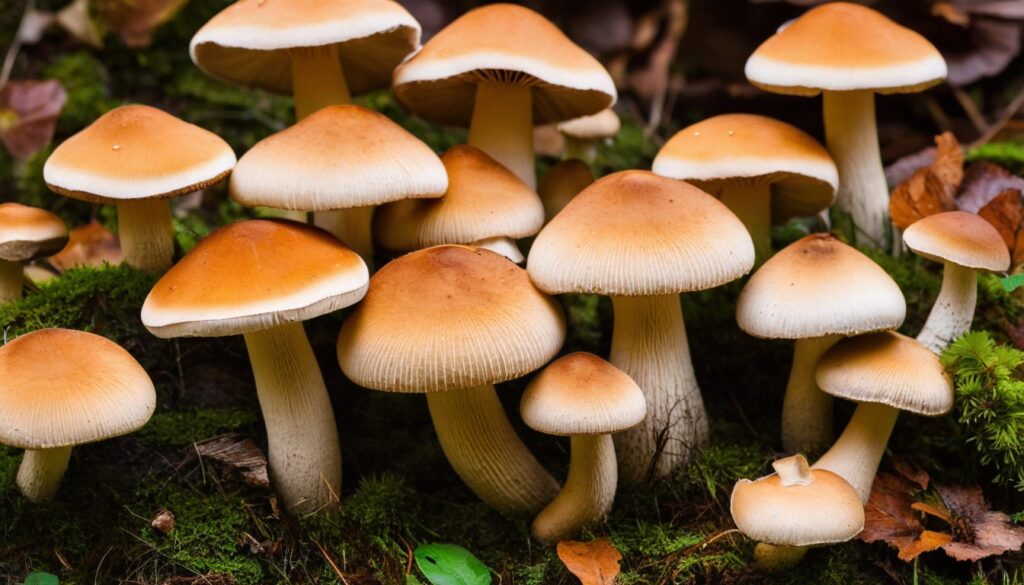Welcome to our comprehensive guide to edible wild mushrooms found in Alabama. If you’re an outdoor enthusiast or a foodie looking to expand your culinary horizons, then you are in the right place. Alabama is home to a diverse range of wild mushrooms that are not only delicious but also offer health benefits. However, it is important to know how to safely identify, harvest, and prepare these mushrooms. In this guide, we’ll cover all that you need to know to forage and cook wild mushrooms in Alabama. Let’s get started!
Key Takeaways
- Alabama is home to a diverse range of edible wild mushrooms.
- Foraging for wild mushrooms is a fun outdoor activity that requires knowledge and safety precautions.
- There are many health benefits associated with consuming wild mushrooms.
- Knowing the seasonal variations of mushroom growth is essential for successful foraging.
- There are many delicious mushroom recipes that you can try out.
Introduction to Edible Wild Mushrooms
Are you interested in exploring nature’s bounty and safely enjoying edible wild mushrooms? In this section, we will introduce you to the world of edible wild mushrooms and all its wonders. Why are edible wild mushrooms sought-after?
Edible wild mushrooms are a highly sought-after delicacy for their unique flavors and textures. Apart from being a culinary delight, these mushrooms also offer various nutritional and medicinal benefits. Mushroom foraging is also an engaging activity that can connect you to nature and the environment.
What are the nutritional benefits of edible wild mushrooms?
Edible wild mushrooms offer a range of nutritional benefits to the human body, such as protein, fiber, and a wide range of vitamins and minerals. They are low in calories and fat, making them an excellent addition to any diet.
What precautions must one take while foraging for edible wild mushrooms?
While edible wild mushrooms are a safe and delicious food source, it’s important to exercise caution while foraging them. One must be able to properly identify the different species and distinguish between edible and poisonous mushrooms. Mushroom foraging should also be done in a safe and ethical manner, keeping the environment and other wildlife in mind.
Mushroom Identification Tips:
Mushroom Characteristics | Poisonous Look-Alikes |
|---|---|
Cap: Convex to flat, smooth texture, and distinct margins | Death Cap Mushroom (Amanita phalloides) |
Gills: Free, joined, or absent, and a clear spore print | False Chanterelle (Hygrophoropsis aurantiaca) |
Stem: Central, off-center, or absent, with a solid or hollow interior | Destroying Angel (Amanita bisporigera) |
Now that we’ve covered the basics of edible wild mushrooms, let’s explore the rich diversity of mushrooms that can be found in Alabama.
The Rich Mushroom Diversity of Alabama
Alabama is home to a diverse range of mushroom species, making it a hotspot for mushroom enthusiasts. The state’s humid climate and various ecosystems create the perfect conditions for a vast array of mushroom species to thrive.
Common Mushroom Species Found in Alabama
Mushroom Name | Characteristics | Potential Uses |
|---|---|---|
Bright orange color, wavy cap, and fruity aroma | Commonly used in soups, sauces, and pasta dishes | |
Morel Mushrooms | Distinctive honeycomb cap, nutty flavor | Great for sautéing, grilling, and pairing with eggs or pasta |
Oyster Mushrooms | Soft and delicate texture, mild flavor | Perfect for stir-fries, soups, and sauces |
Lion’s Mane Mushrooms | Ivory or white color with shaggy spines, a seafood-like taste | Best roasted, sautéed, or used in soups and stews |
Other notable mushroom species found in Alabama include various types of boletes, amanitas, and agarics. Each mushroom has unique characteristics and potential uses.
If you’re planning a mushroom foraging expedition in Alabama, make sure you’re well-equipped with knowledge of the different mushroom species and their identifying features to ensure safe and successful foraging.
Foraging for Edible Wild Mushrooms in Alabama
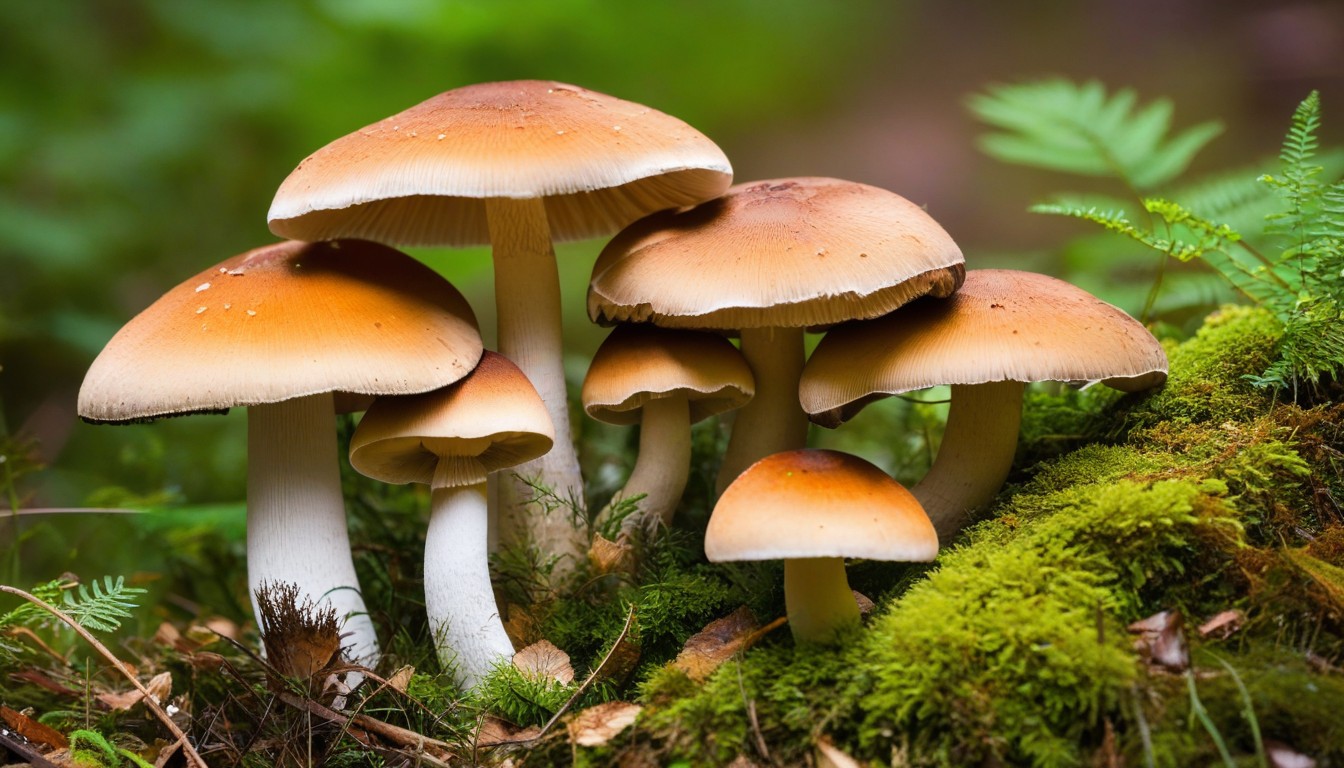
Foraging for edible wild mushrooms in Alabama is an exciting activity that allows you to connect with nature and discover hidden gems. However, it’s essential to take precautions and prioritize safety to ensure an enjoyable experience.
Essential Tools
One of the essential tools for foraging edible wild mushrooms in Alabama is a good field guidebook. You’ll also need proper clothing, sturdy shoes or boots, and a small knife to cut the mushrooms. It’s recommended to bring a basket or mesh bag to hold the mushrooms instead of plastic bags to keep them fresh and prevent spoilage.
Safety Guidelines
Safety should always be the top priority when foraging for wild mushrooms. Always be 100% sure of the mushroom’s identification before consuming it. Avoid eating raw mushrooms, and cook them thoroughly before consumption to kill off any potential contaminants or toxins. It’s also advised not to harvest mushrooms in areas with heavy pollution, such as roadsides or industrial areas.
Best Practices
Foraging for edible wild mushrooms involves more than just plucking them from the ground. Best practices include taking only what you need, leaving behind mature, healthy mushrooms to spore, and avoiding damaging the surrounding ecosystem. It’s also vital to only harvest mushrooms that are growing on the ground and not on trees, as these are often not suitable for human consumption.
Common Edible Wild Mushrooms in Alabama
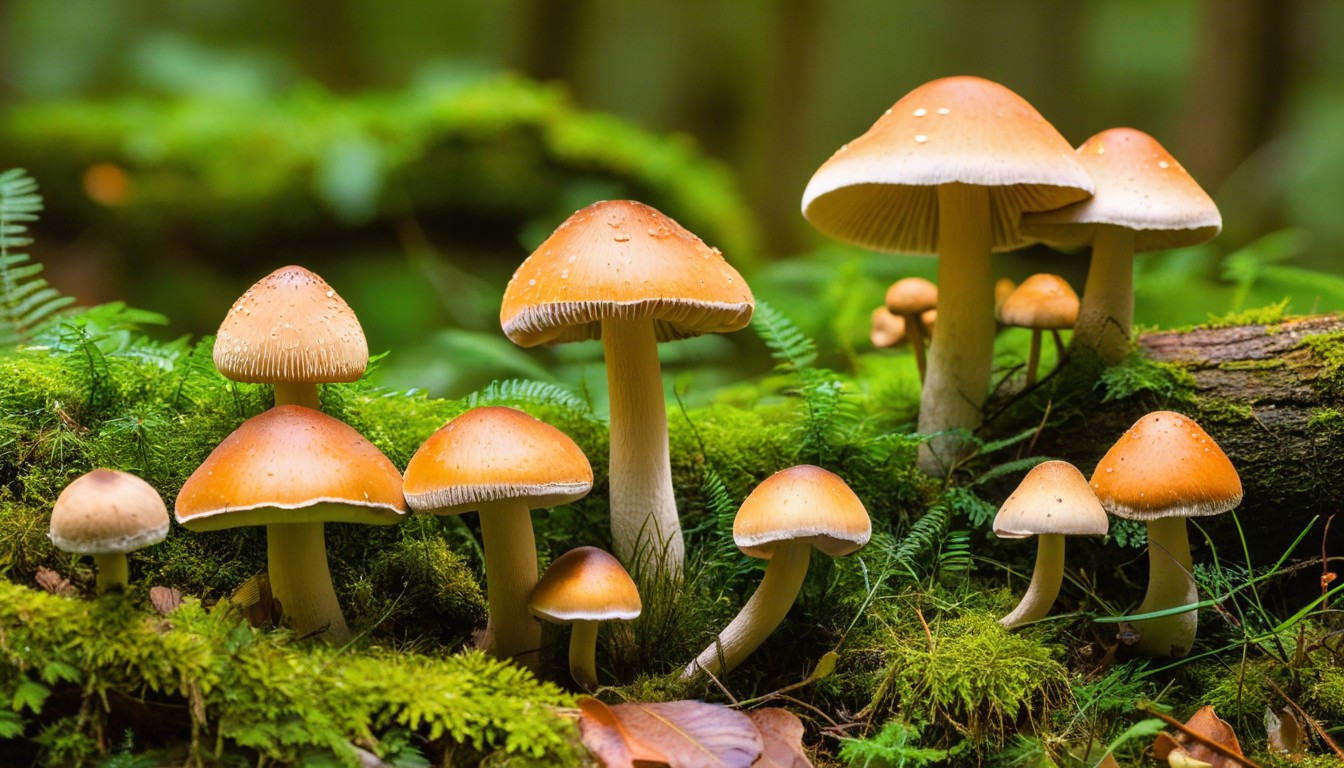
Alabama is home to various delicious wild mushrooms, and in this section, we’ll explore some of the most commonly found ones. Here are a few of the edible mushrooms you might come across on your foraging journey:
Mushroom Name | Identifying features | Preferred Habitat | Culinary Uses |
|---|---|---|---|
Chanterelle | Bright yellow/orange, funnel-shaped cap with false gills | Deciduous and coniferous forests, near hardwood trees | Buttery and nutty flavor, used in a variety of dishes such as soup, risotto, and pasta |
Morel | Honeycomb-like cap with a hollow center | Patches of burnt or recently disturbed land, often found around aspen, oak, and elm trees | Earthy, nutty flavor, and great for use in sauces and soups or as a side dish |
Hen-of-the-Woods (Maitake) | Large, frilly, clustered caps with no stems | Grows at the base of hardwood trees, especially oak | Rich, earthy flavor that pairs well with meats or as a vegetarian substitute for meat |
Black Trumpet | Small, delicate, funnel-shaped cap with a slightly wavy edge | Deciduous and coniferous forests, often found near oak trees | Subtle and complex flavor, often used in soups, sauces, and meat dishes |
These are just a few of the many edible wild mushrooms in Alabama. Remember, never eat anything you’re not 100% sure is safe to consume. Always consult foraging experts, and do your research before consuming any wild mushroom.
Delicious Wild Mushroom Recipes from Alabama
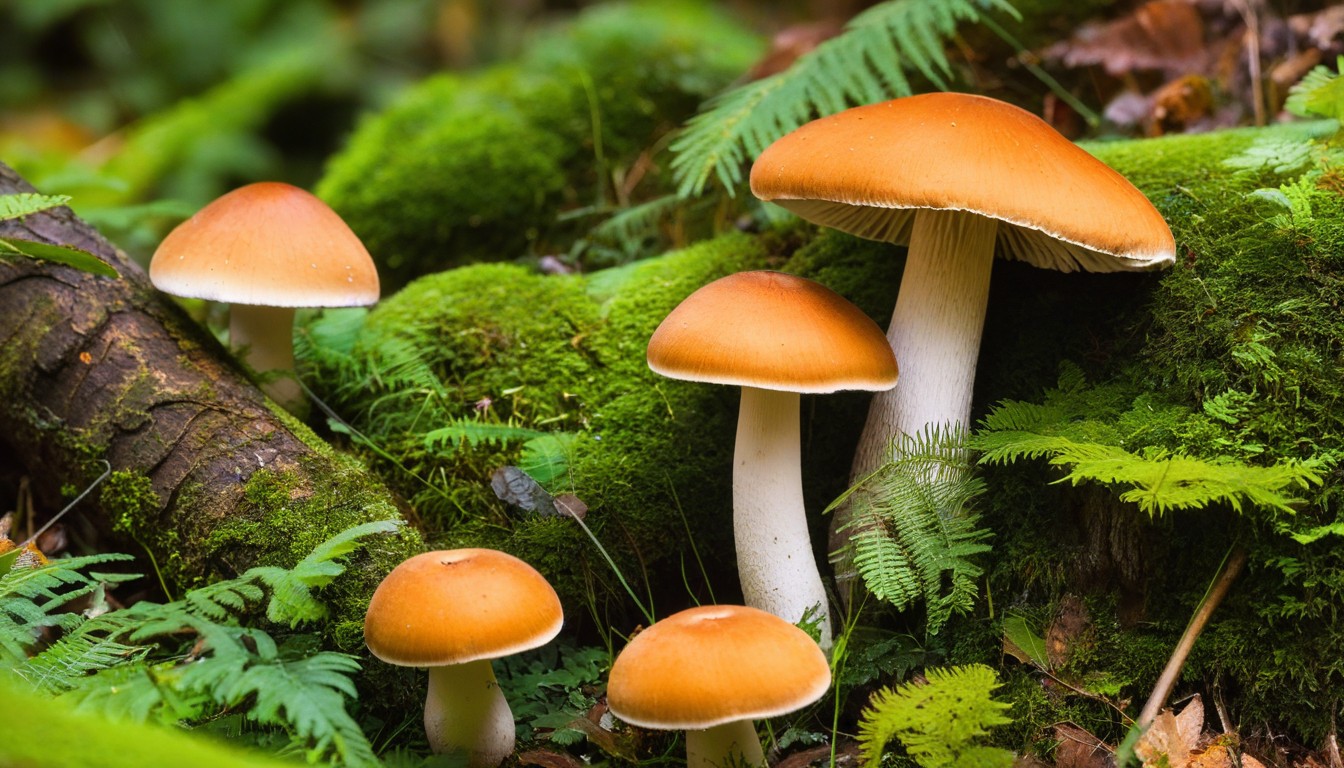
Now that you have foraged some flavorful wild mushrooms, it’s time to bring them to your kitchen. These delicious wild mushroom recipes will showcase the unique textures and flavors of Alabama’s wild mushrooms.
1. Wild Mushroom Risotto
This creamy, savory risotto is an excellent way to highlight the earthy flavors of wild mushrooms. Sauté chopped mushrooms with garlic and shallots, then stir in Arborio rice, white wine, and warm chicken broth until perfectly cooked. Top with grated Parmesan cheese and fresh parsley for a show-stopping meal.
2. Grilled Mushroom Skewers
For a simple and delicious dish, thread assorted wild mushroom caps onto skewers and brush with a mixture of olive oil, balsamic vinegar, and minced garlic. Grill for a few minutes on each side, then serve with a sprinkle of coarse salt and chopped herbs.
3. Wild Mushroom Soup
This comforting soup is perfect for a chilly evening or rainy day. Sauté sliced mushrooms, onions, and celery in butter until tender, then add chicken stock, heavy cream, and fresh herbs. Simmer until the flavors meld together, then puree until smooth for a rich and satisfying meal.
Mushroom Variety | Recipe |
|---|---|
Morels | Morel Mushroom Sauce |
Chanterelles | Chanterelle Mushroom Tart |
Lion’s Mane | Lion’s Mane Mushroom Tacos |
These mouthwatering recipes are just a few of the many ways you can incorporate Alabama’s wild mushrooms into your cooking. Experiment with different types of mushrooms to discover new and exciting flavors that will delight your taste buds.
Health Benefits of Edible Wild Mushrooms
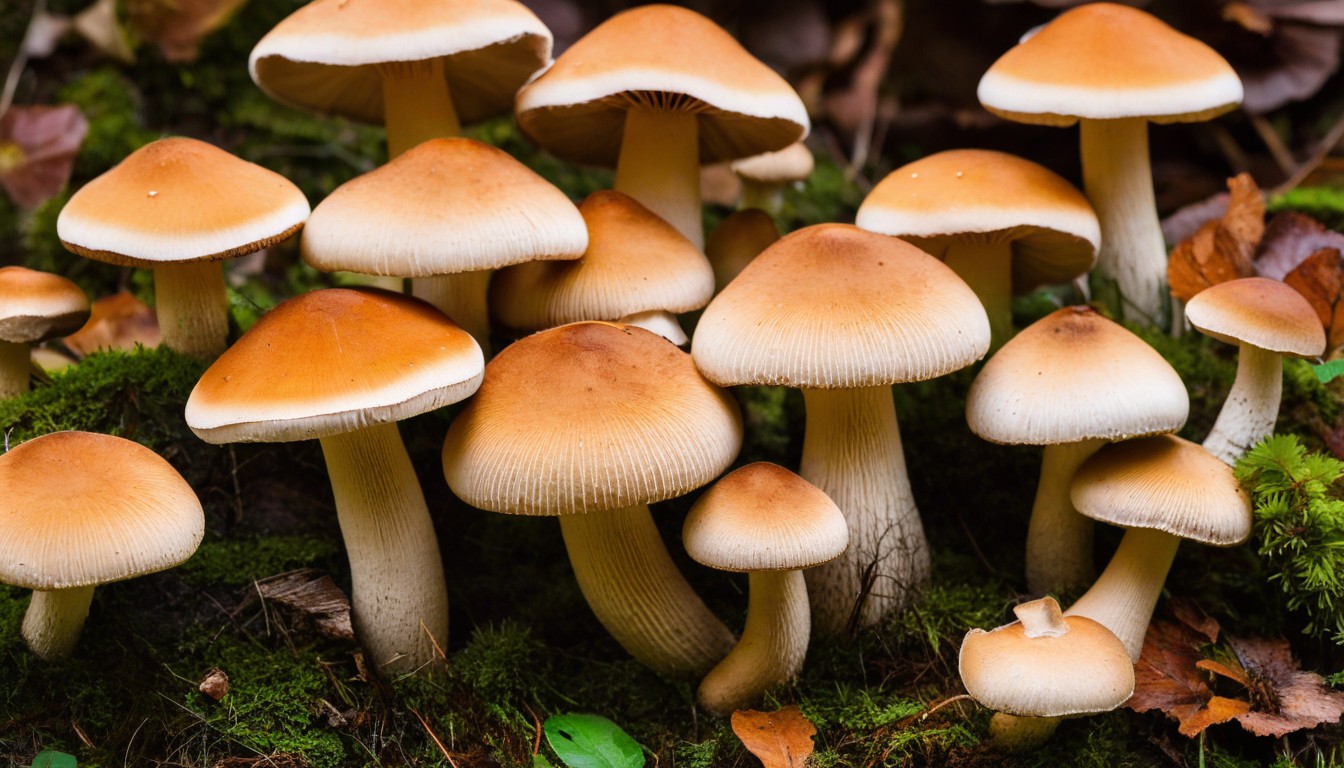
If you’re looking for a nutritious addition to your diet, edible wild mushrooms may be just what you need. Not only are they delicious, but they also offer a range of health benefits.
For example, many edible mushrooms are naturally low in calories and high in fiber, making them an excellent choice for weight management. They are also a rich source of amino acids, which are essential for building and repairing muscle tissue.
Some studies have even suggested that certain mushrooms contain compounds that may boost immune function and reduce inflammation in the body. For instance, shiitake mushrooms have been shown to contain a compound called beta-glucan, which may help to regulate the immune system and reduce the risk of certain diseases.
In addition to their immune-boosting properties, some edible mushrooms also contain antioxidants that can help to protect the body from damage caused by free radicals. These compounds may also have anti-aging effects, helping to keep your skin looking young and healthy.
Types of Edible Wild Mushrooms with Health Benefits
Mushroom Name | Health Benefits |
|---|---|
Morel mushrooms | Antioxidant-rich, great source of vitamin D |
Chanterelle mushrooms | Low in calories, high in fiber, source of potassium and vitamin B |
Maitake mushrooms | May improve heart health, immune-boosting properties |
Hen of the woods mushrooms | May reduce inflammation, contains a range of vitamins and minerals |
Of course, it’s important to note that some wild mushrooms can be toxic and should never be consumed. Always be sure to properly identify any mushrooms you plan to eat and consult with an expert if you’re unsure.
With their nutritional value and potential health benefits, edible wild mushrooms are a great choice for anyone looking to incorporate more whole, natural foods into their diet. Just be sure to forage safely and responsibly to ensure a positive and rewarding experience.
Precautions and Safety Measures
Foraging for edible wild mushrooms is an adventure in itself, but it’s crucial to prioritize safety at all times. Here are some precautionary measures that you can take when setting out on a mushroom hunting expedition in Alabama:
- First and foremost, only forage for mushrooms that you can confidently identify as safe to eat. Consider attending a workshop or joining a local mushroom foraging group to learn more about the species found in the area.
- It’s essential to wear protective clothing, including long sleeves and pants, to protect your skin from scratches and insect bites.
- Avoid picking mushrooms near busy roads, industrial areas, or other contaminated environments where they may have absorbed pollutants.
- Be careful when handling mushrooms as some can be poisonous even to the touch. If in doubt, use gloves or avoid touching the mushrooms altogether.
- Carry a basket or mesh bag to allow spores to disperse as you move and avoid carrying mushrooms in plastic bags, which can cause them to spoil quickly.
- Always leave behind some mushrooms to ensure their continued growth and contribute to local biodiversity.
By taking these safety measures, you can ensure a safe and enjoyable mushroom foraging experience in Alabama.
Seasonal Considerations for Mushroom Foraging in Alabama
If you’re planning to forage for wild mushrooms in Alabama, it’s essential to keep in mind that their availability varies from season to season. Knowing when and where to look for certain species can increase your chances of a successful mushroom hunting expedition.
Fall: Fall is a popular time for mushroom foraging in Alabama. During this season, you can find a variety of mushroom species, including chanterelles, oyster mushrooms, and honey mushrooms.
Winter: While the winter months can be more challenging for foraging, you can still find some species, such as the winter oyster mushroom and the velvet foot mushroom. These mushrooms can thrive in colder temperatures and can be found in both wooded areas and on hardwood stumps.
Spring: Spring is another excellent season for foraging in Alabama. This is the time when morel mushrooms start to pop up, along with other species like chicken of the woods and the chanterelle.
Summer: In the hot and humid summer months, mushroom foraging can be more limited, but it’s still possible to find some species, such as the sulphur shelf and Lion’s mane mushroom. These mushrooms can be found growing on logs and dead trees.
Table – Common Mushroom Species and Their Seasons in Alabama
Mushroom Species | Seasons |
|---|---|
Morel Mushroom | Spring |
Chanterelle Mushroom | Spring, Fall |
Chicken of the Woods Mushroom | Spring, Summer, Fall |
Honey Mushroom | Fall |
Lion’s Mane Mushroom | Summer |
Velvet Foot Mushroom | Winter-Spring |
Keep in mind that the mushroom season can vary depending on factors like rainfall, temperature, and location. Always do your research and consult with a local expert before foraging to ensure your safety and success.
Conclusion
With Alabama’s bountiful mushroom diversity, foraging for wild mushrooms can be an exciting and rewarding adventure. By following the proper safety measures and seasonal considerations, you can safely forage for wild mushrooms and enjoy their unique flavors and health benefits.
From the delicious recipes that highlight Alabama’s wild mushroom flavors to the nutritional value and medicinal properties that they possess, there’s no doubt that the mushroom kingdom is full of surprises.
So, what are you waiting for? Grab your foraging gear and head out into Alabama’s natural wonders to discover the edible wild mushrooms that are waiting for you today!
FAQ
Can all wild mushrooms in Alabama be safely eaten?
No, not all wild mushrooms in Alabama are edible. Some species can be toxic or even deadly if consumed. It is essential to have proper knowledge or consult an expert to identify which mushrooms are safe to eat.
How can I identify edible wild mushrooms in Alabama?
Identifying edible wild mushrooms requires careful observation and knowledge. It is crucial to learn about mushroom characteristics, such as shape, color, texture, and habitat. Consider joining a local mushroom club or consulting a reputable field guide to enhance your identification skills.
Are there any poisonous mushrooms in Alabama?
Yes, Alabama is home to several poisonous mushrooms. Some poisonous species resemble edible mushrooms, making identification challenging. It is crucial to educate yourself on poisonous species and avoid consuming any mushroom without proper identification.
Can I sell the wild mushrooms I forage in Alabama?
Selling wild mushrooms that you forage in Alabama requires a permit. Before engaging in any commercial activities related to wild mushrooms, it is recommended to research and comply with the regulations set by the Alabama Department of Agriculture and Industries.
Is it legal to forage for wild mushrooms in Alabama state parks?
The regulations regarding mushroom foraging in Alabama state parks vary. Some state parks may have specific rules or restrictions on foraging activities. It is advisable to check with the park authorities before engaging in foraging activities.

